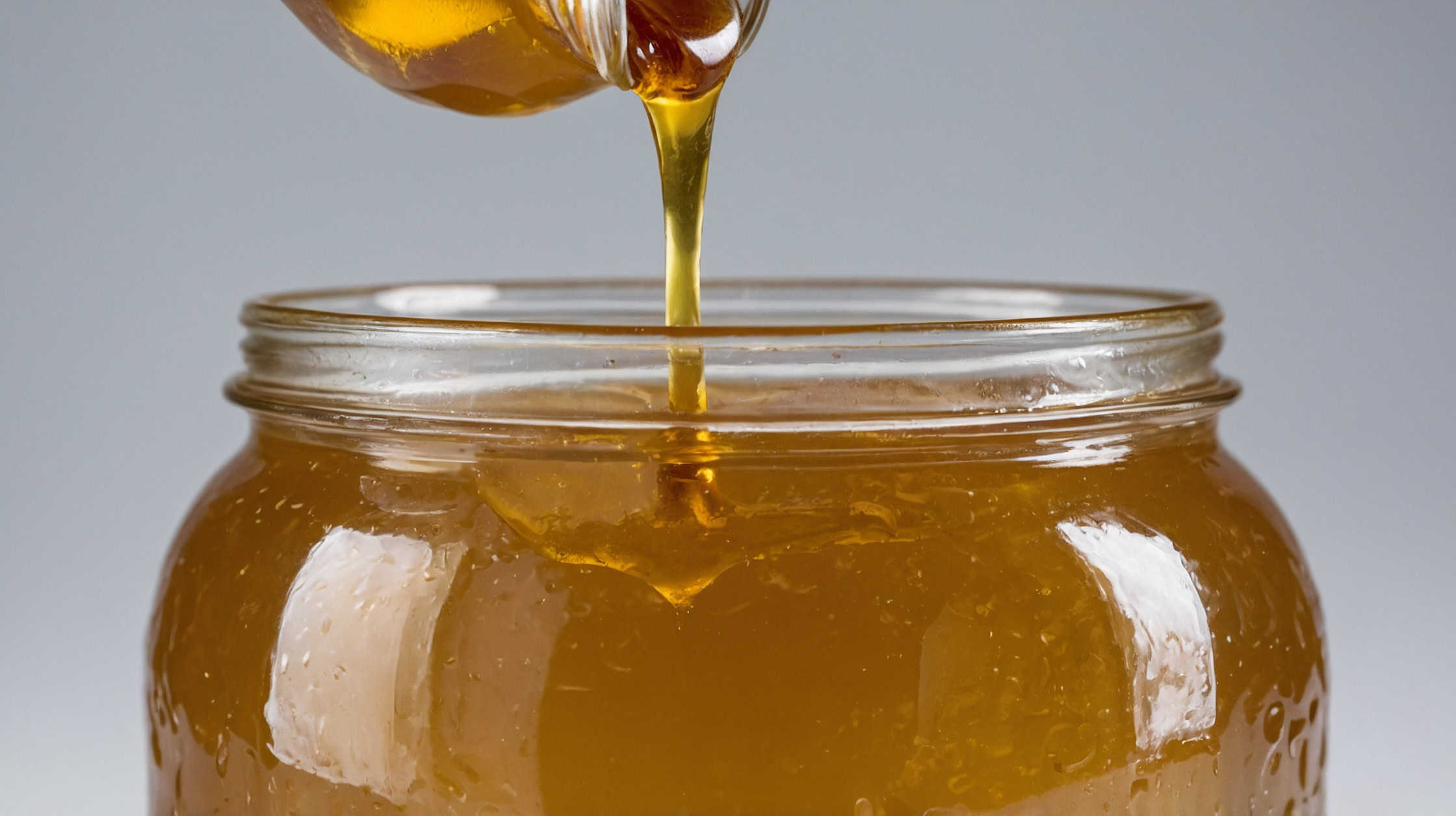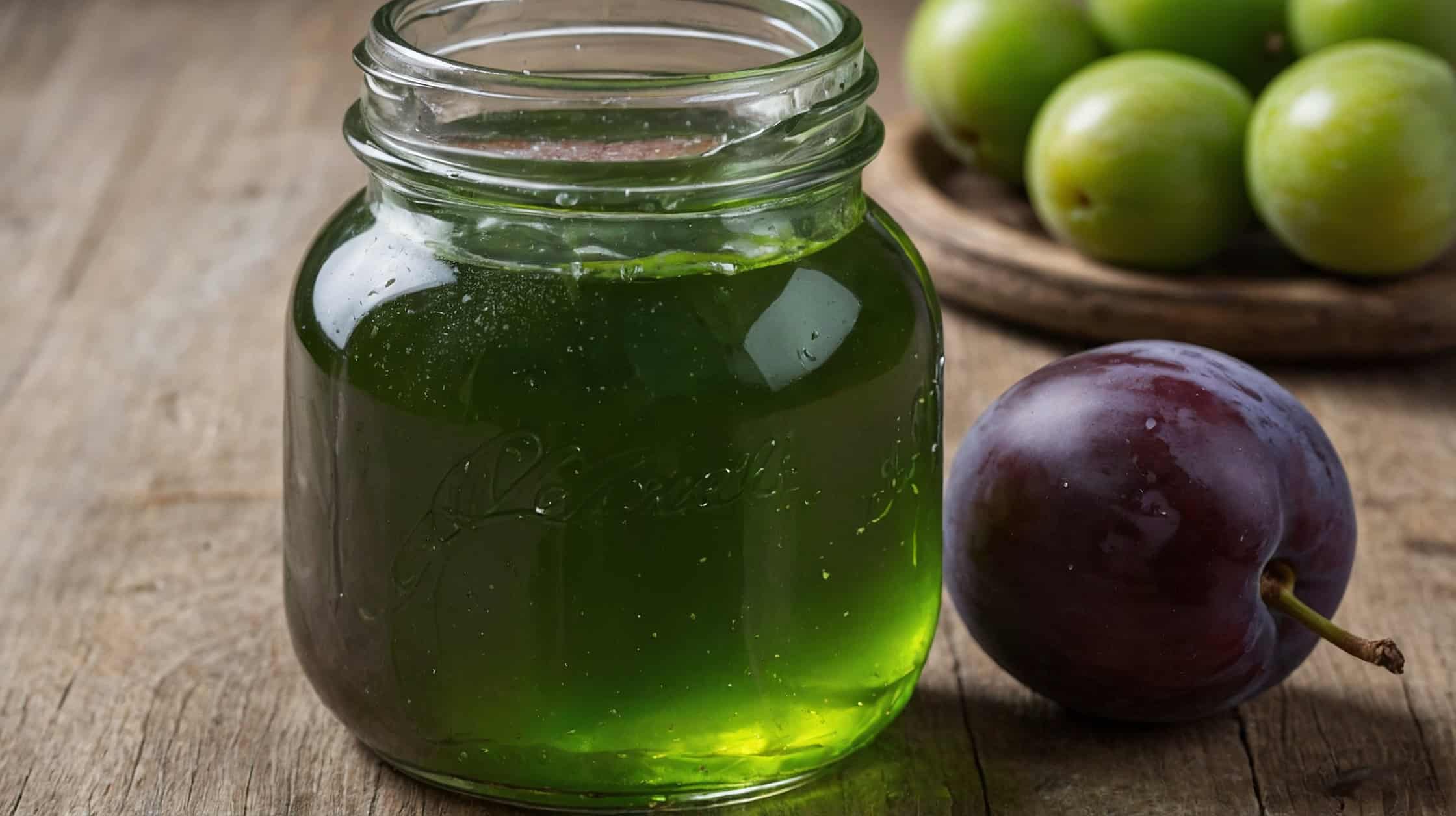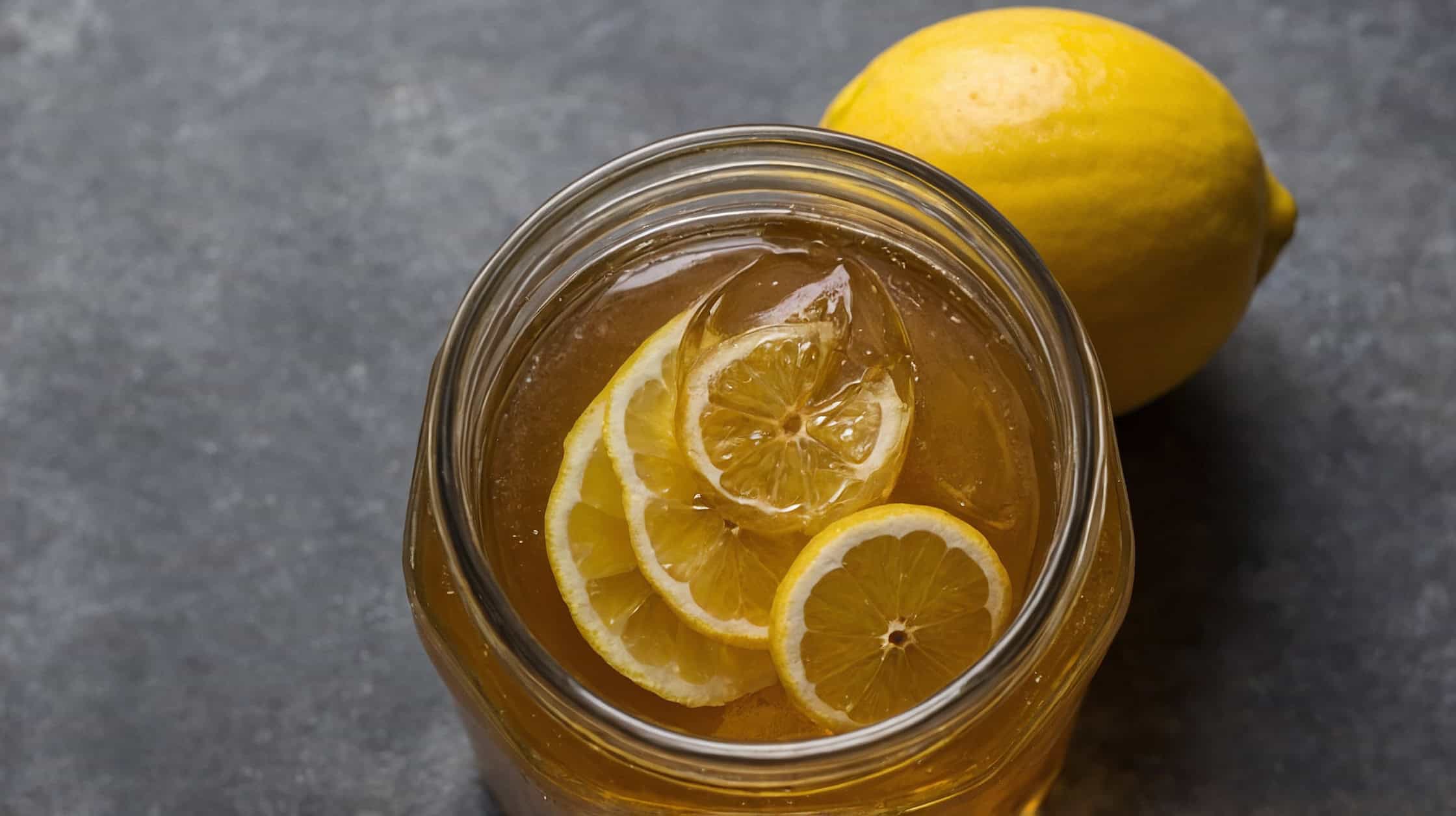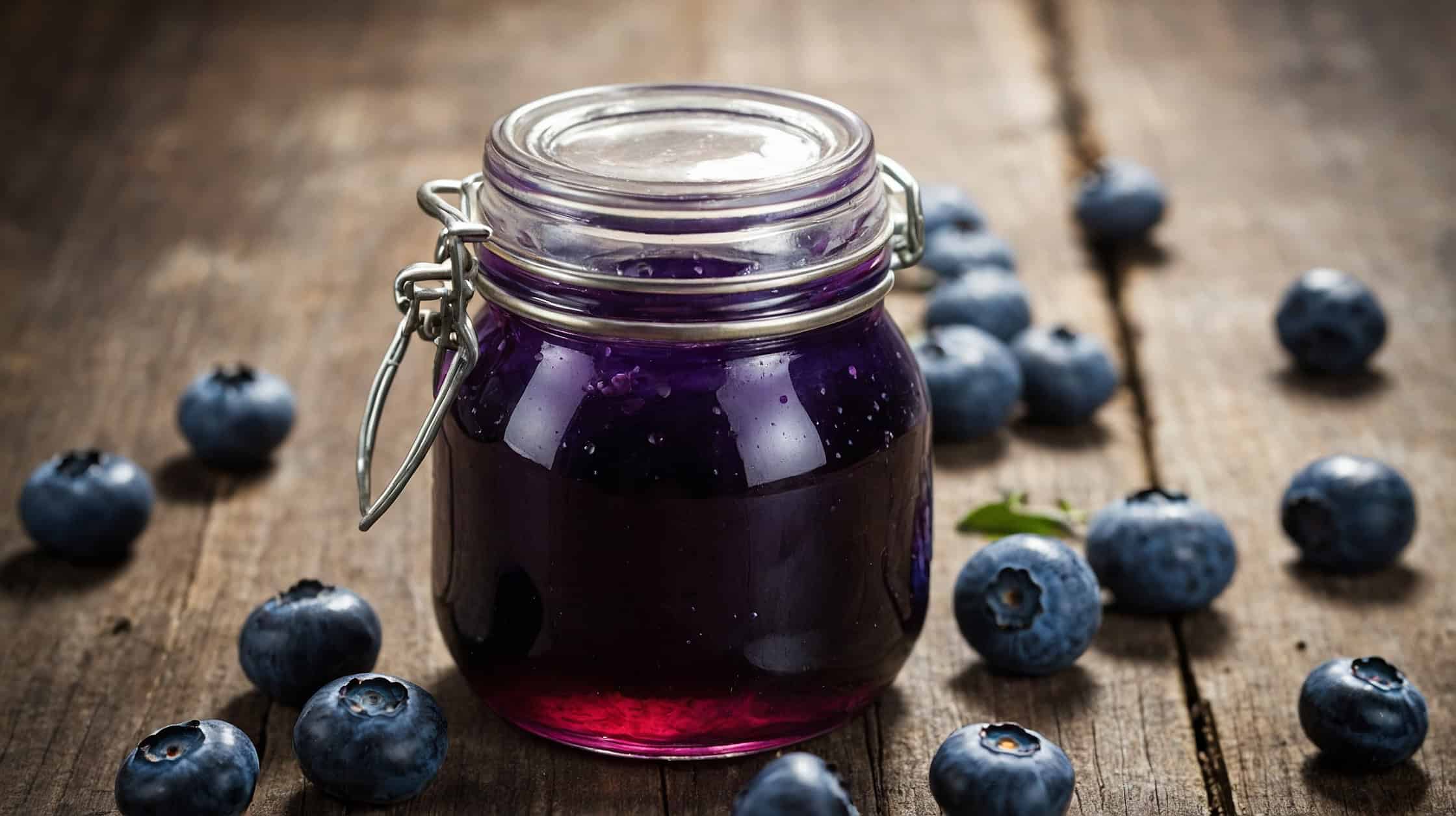Cheong, commonly known as Korean fruit syrup, has gained popularity around the world for its sweet and tangy taste.
Made by fermenting fruit with sugar, Cheong transforms into a versatile syrup perfect for teas, cocktails, or even dessert toppings. The process is simple, requires no cooking, and results in a fresh, vibrant flavor.
In Korea, cheong isn't just for drinks; it's a staple in many dishes. From being a natural sweetener in cooking to a remedy for the common cold, this fruit syrup boasts numerous uses. Imagine starting your day with a cheong-infused tea or adding a splash to your favorite salad dressing—it's a game-changer.
For those new to Korean cuisine, cheong offers a delightful introduction. Whether you're interested in experimenting with traditional recipes or just looking for a new way to sweeten your meals, this Korean fruit syrup is worth trying.

Jump to:
🧐 History and Cultural Significance
Traditional Korean Cuisine
Cheong began as a staple in traditional Korean cuisine. Families would prepare various types, such as plum syrup (maesil-cheong). This syrup was made by fermenting plums with sugar, creating a rich and smooth liquid. People believed it could treat minor ailments like the common cold.
Cheong was also part of many traditional Korean ceremonies and celebrations. It was used to prepare special dishes enjoyed during holidays and family gatherings. The process of making cheong was often a family activity passed down through generations.
Beyond flavor, cheong held symbolic meaning. It represented the sweetness of life and the importance of preserving heritage. Korean cuisine wouldn’t be the same without this cherished syrup.
Modern Uses in Cuisine and Beverages
Today, cheong is still very popular but has evolved to suit modern tastes. It’s a sweetener in various recipes, from teas to baked goods. Many people use fruit-based cheong as a natural sweetener instead of honey or sugar.
In beverages, cheong is a common addition to teas and cocktails. Strawberry cheong or lemon cheong are trendy choices, offering a refreshing twist. Health-conscious consumers also appreciate cheong for its natural ingredients and minimal processing.
Cheong has also found a place in international kitchens. Cooks worldwide are experimenting with this Korean syrup, bringing a piece of Korean culture to diverse culinary landscapes.

🫙 Types of Cheong
Plum Cheong (Maesil-Cheong)
Plum cheong, also known as maesil-cheong, uses green plums. It’s one of the most popular types of cheong because green plums are known for their unique flavor and health benefits.
To make maesil-cheong, green plums are cleaned, dried, and mixed with sugar. Over time, the mixture ferments, creating a thick, sweet syrup. This syrup retains the tartness of the plums, making it a great addition to drinks like tea or cocktails. It’s also believed to aid digestion.
Apple-Lemon Cheong
Apple-lemon cheong is a refreshing mix of apples and lemons. This cheong type combines the sweetness of apples with the zesty tang of lemons.
The process starts with cleaning and chopping the fruits. The apple and lemon slices are layered with sugar in a jar. This mixture ferments over several days, resulting in a sweet and tart syrup. Apple-lemon cheong can be used in teas, desserts, or as a salad dressing base.
Other Fruit Cheong Varieties
There are many other fruit cheong varieties, each bringing unique flavors. Common fruits used include blueberries, ginger, and citrus fruits like lime and orange.
For blueberry cheong, blueberries are cleaned and mixed with sugar. Ginger cheong is made similarly but it combines ginger slices with sugar. Each type of fruit provides different tastes and benefits.
Cheong made from ginger is often used for its warming qualities, while blueberry cheong is praised for its rich flavor and antioxidants.

🫐 Preparation and Ingredients
Basic Components
The primary components for making cheong are fruit and sugar. Almost any fruit can be used, including ginger, plums, lemons, and apples. The type of sugar is also essential. Common choices are granulated sugar and turbinado sugar for their unique flavor profiles.
Cleanliness is crucial to avoid contamination. Use a clean mason jar and utensils to ensure the mixture ferments properly. Mixing bowls and a tamper are often needed to pack the fruit tightly in the jar.
Fruit and Sugar Ratios
The typical ratio for making cheong is 1:1, meaning equal parts fruit to sugar. For example, if you have 1 pound of chopped fruit, you'll mix it with 1 pound of sugar. It's possible to use a mix of different sugars like granulated and turbinado for added depth.
Start by cleaning and chopping the fruit. Weigh the fruit and sugar accurately for the best results. Mix the fruit with 50-75% sugar before transferring it to a jar. Pack it down using a tamper or spoon, then add the remaining sugar on top. This method ensures the fruit is well-coated and ferments evenly.
Layering Techniques
Layering is key to making cheong. Place the fruit in the clean jar first. Cover with half the sugar, pressing down gently with a clean spoon or tamper. Add another layer of fruit and repeat until all ingredients are used. The final layer should be sugar. This ensures all pieces are well-coated and aids fermentation.
Fermentation Essentials
Fermentation is crucial. Once layering is done, lightly cover the jar to allow airflow. Avoid tight lids, which can cause pressure build-up. Place the jar in a cool, dark place like a pantry.
Monitor the jar daily. Bubbles or foam indicate active fermentation. Stir or flip the mixture occasionally. Fermentation typically takes 1-2 weeks. Once bubbling slows down, it's usually ready. The fruit should be soft and syrupy.
Straining and Storing
After fermentation, strain the mixture to separate the syrup from the fruit. Use a fine mesh strainer or cheesecloth for best results. Pour the cheong into a clean, sanitized container.
Store the strained syrup in the refrigerator. The leftover fruit can be used in recipes or discarded. Properly stored cheong can last several months. Always use clean utensils to avoid contamination.

🍹 Uses of Cheong in Cooking and Beverages
Desserts and Sweet Treats
Cheong's sweetness makes it perfect for desserts. It can be used as a topping for ice cream and pancakes, adding a natural fruity taste. Drizzling cheong over waffles or mixing it into batter gives a delightful twist.
For a fun treat, try making fruit leather from the leftover fruit after straining cheong. Candy, jam, and jelly are other delicious options. These preparations use the fruit from cheong, ensuring nothing goes to waste.
Savory Dishes and Marinades
Cheong isn't just for sweets—it works in savory dishes, too. Use it as a marinade for meats like chicken or pork. The sweetness balances out the savory elements, creating a mouthwatering dish.
It's also great for Korean barbecue marinades. You can add cheong to salad dressings for a sweet, tangy flavor. Mix it with a bit of vinegar and oil for a unique twist. It's also a lovely addition to stir-fries, adding depth and complexity to the sauce.
Beverages and Cocktails
Cheong shines in drinks, from teas to alcoholic beverages. It's a popular base for tea, providing a natural sweetness. Add a spoonful to coffee for an unexpected but pleasant flavor.
In cocktails, cheong can elevate a drink. Mix it into a soju for a flavorful experience, or use it in mocktails for a refreshing, non-alcoholic option. It adds a fresh, fruity note that enhances the overall drink.
For a creative twist, use cheong in a blueberry Moscow mule or a flavored soju. It's a versatile syrup that brings a lovely, natural sweetness to any beverage.
🧑⚕️ Nutritional Benefits
Cheong is often prized for its use as a natural sweetener. It's made from various fruits like green plums, pears, and lemons. The syrup retains many of the fruit’s vitamins and minerals, making it a healthier alternative to refined sugar.
The main components include fructose and glucose, which are less processed than table sugar. This can be advantageous for those managing their blood sugar levels.
Because it's derived from fruits, it also contains antioxidants, which help combat free radicals and reduce inflammation. The exact nutritional value can vary based on the type of fruit used, but cheong generally provides some beneficial nutrients.
🤔 Storing and Shelf Life
Proper storage is crucial for extending the shelf life of cheong. It's best kept in a cool, dark spot away from direct sunlight. Popular storage locations include pantries or cupboards. Refrigeration can also help, especially after opening.
Unopened syrup: Can last several months if stored properly.
Opened syrup: Typically lasts up to 6 months when refrigerated.
To store cheong, a glass jar with an airtight lid is recommended. This minimizes exposure to air, which can cause spoilage and fermentation. Ensure the jar is clean and dry before transferring the syrup.
🦠 Preventing Mold and Bacteria
Mold and bacteria are common concerns when preserving fruit syrups. To reduce these risks, start with clean and sanitized jars. Washing fruits thoroughly with water and a little baking soda can also help remove any pesticide residues.
When making cheong, weigh the fruit and sugar accurately. An imbalance can affect the fermentation process, leading to spoilage. The sugar acts as a preservative, so ensure an adequate amount is used.
Avoid using metal utensils as they can introduce contaminants. Instead, use clean wooden or plastic spoons. Storing cheong in the refrigerator after opening helps maintain its quality and slows down any microbial growth.
❓ Frequently Asked Questions
If you don't have cheong, you can use honey or maple syrup. These both have a similar sweetness and can work in many recipes. Just note that the flavor won't be exactly the same as cheong.
Cheong generally doesn't contain any alcohol. It's made by mixing fruit and sugar, and while it can ferment slightly, the alcohol content is usually negligible.
Cheong can be used in many ways. It can flavor water or carbonated drinks, be added to tea, drizzled over yogurt and pancakes, or incorporated into desserts like pies and cheesecakes. It also works well in salad dressings and sauces.





Comments
No Comments